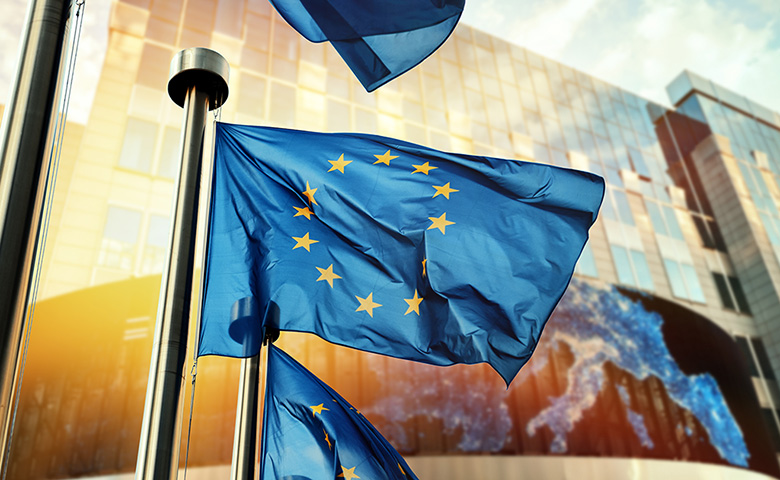New trends are emerging to meet the needs of online shoppers in 2022. Does your business have an updated website to drive sales?
Things are evolving quickly in the e-commerce field. This year is no exception, with several new trends and technologies coming to light. Companies are optimizing their practices to make sure customer needs are met, no matter where they are. What strategies should businesses adopt in 2022 to remain competitive?
Today’s top trends
1. Personalizing the customer experience
We all know that if a customer is satisfied with their experience on your website, they’ll be more likely to come back and make additional purchases. A good customer experience includes:
- Easy navigation,
- Clear product descriptions,
- Quality photos,
- FAQs that clearly address customer concerns,
- Efficient after-sales service.
But companies that want to retain customers also need to think about personalizing the user experience. Every customer wants to feel unique. They want to be addressed personally and see that you understand how their needs differ from those of other consumers.
It should be noted that when third-party cookies are eliminated in 2023, businesses won’t have access to data collected when customers browse external sites. This will reduce the potential of using retargeting ads.
As a result, companies will need to rely more heavily on their internal browsing data and other proven methods, such as loyalty programs, to connect with consumers, gain insights about their preferences and offer them the right products and services at the right time.
Using artificial intelligence in a broader and more sophisticated way can facilitate data analysis, behavioural predictions and real-time adjustments.
2. Strengthening your community
Listening to your customers and interacting with them is important. You can connect with consumers through your website’s chat function, on social media or even at your brick-and-mortar locations.
By allowing current and prospective customers to ask questions and seek advice, you strengthen their sense of belonging and expand your community.
Once consumers realize there are humans behind your company—people they can actually talk to—they’ll start seeing your brand in a different light. This leads to increased brand awareness.
3. Rethinking the supply chain
The last two years have shown us how a kink in the supply chain can have a serious effect on companies. It’s time to re-examine the way you work with production plants and suppliers.
By reassessing and adapting your manufacturing and shipping strategies, you may be able to cut costs and find ways to meet customer needs more quickly.
In addition, having a clear and transparent distribution and shipping policy can help prevent confusion and make sure customers are fully satisfied.
4. Optimizing sales and shipping processes
Online consumers aren’t just purchasing a product, they’re buying a service. It’s a good idea to make quick delivery your de facto standard, but be sure to give consumers a range of shipping options to suit all budgets. It’s also wise to provide convenient delivery options for international customers.
Why not offer free shipping with a minimum spend? Don’t underestimate the subconscious benefit this can have. After all, consumers don’t like paying extra fees. Send customers an email or text with their parcel’s tracking number. Last but not least, don’t forget to make it easy for customers to return items, if necessary.
5. Promote sustainability
Make no mistake, “renewable” and “sustainable” aren’t just buzzwords. Customers genuinely want to associate themselves with brands whose values are aligned with their own. Today this means making choices that are socially ethical, environmentally responsible and sustainable. In fact, this trend isn’t just about attracting customers.
Workers are also looking for ethical employers. Let them know about your company’s sustainability initiatives. Given the current labour shortage, this can only work in your favour.
6. Maintain customer and supplier trust
Now more than ever, companies need to protect customers’ and suppliers’ privacy and personal information. You need to have a cybersecurity policy and protocols. Your organization’s reputation with customers and suppliers depends on it.
Trends to keep an eye on
7. Adopting an omnichannel strategy
An omnichannel strategy is about enabling sales wherever your customers are ready to buy—whether it’s on your website, social media, mobile app or in stores. All of these channels need to communicate seamlessly with each other while offering a unique customer experience.
8. Offering live stream shopping
When it comes to promoting products, recorded videos don’t cut it anymore. Businesses are increasingly using live streamed experiences to entice customers to purchase products in real time. The live videos include demos, convincing tests and sometimes even exclusive discounts offered for a short window of time.
This approach allows for real human-to-human connections between companies and customers. Not only can consumers ask questions and get insights in real time, they can also share their impressions and favourites with other online shoppers, thereby strengthening your community. Live stream shopping is expected to soar and become the new standard.
9. Taking advantage of augmented reality
Augmented reality lets customers see products from different angles and assess how the items would look in their home (for example, by virtually positioning them in your space). In a sense it’s like recreating the in-store experience by letting you see and touch products before buying them, but from the comfort of your own home and with the elements of your living environment. For buyers, this is reassuring. And for merchants, it means fewer products get returned.
10. Stay on top of evolutions
Online sales will remain crucial in 2022. While e-commerce presents many challenges, it also offers numerous opportunities for brands to innovate and differentiate themselves from the competition.
It’s essential to have a strong brand identity, express your values clearly and have an accurate understanding of your target customer base.
Communicate with customers on all your platforms, and offer them a quick and painless experience. Sales are sure to follow!
This article was written with Guy-Jacques Langevin, co-founder of Buzztroop.
You could also like to read
Next article
The Grant Thornton International IFRS team has three new publications in the Insights into IFRS 8 series:
- Identifying Operating Segments;
- Aggregating Operating Segments;
- Reportable Segments.
For entities that operate in a variety of types of businesses, geographical locations, regulatory or economic environments or markets, high quality management accounts are essential. They enable management to monitor performance, allocate resources and devise business and market strategies.
IFRS 8 Operating Segments requires much of this management information for publicly listed entities to be published externally, so that investors, analysts and other users of the entities’ financial statements can review an entity’s operations from the same perspective as management.
The Insights into IFRS 8 series considers key implementation issues, provides interpretational guidance in certain problematic areas and includes several examples illustrating the standard’s requirements.
Next article
Updated on May 10, 2023
Driven by the current situation, more and more businesses are turning towards e-business. What are their tax obligations?
Organizations must be aware of the impact of selling in certain territories. We’re going to review the application of commodity taxes on the sale of tangible personal property in Canada and the United States in an e-business context.
Please note that sales made to Europe could also have tax impacts in terms of European value added taxes.
Determining the tax territory
When it comes to e-business, it’s essential to determine the place of transaction, that is, the territory in which the sale is deemed to have been made, in order to know which commodity taxes are applicable. Furthermore, the rules could be different if the supply made is tangible personal property or intangible personal property. So, it’s important to properly qualify the nature of the supply made.
Supply place – Tangible personal property
Generally, a supply by way of sale of tangible personal property is deemed to be made at the place where the property is delivered or made available to the buyer.
This rule generally applies based on where legal delivery of the goods to the buyer occurs, which is determined by the terms of the applicable agreement for the sale of the goods.
In the context of e-business, where the seller handles the delivery in most cases, the applicable taxes will be determined based on the delivery address. It is therefore essential for businesses selling online to maintain a record of sales based on delivery addresses.
Transactions within Canada
With regard to interprovincial e-business, it’s important to keep in mind the different taxes applicable in each province.
First, any person carrying on a business in Canada who is not a small supplier is required to collect tax on goods and services (hereafter “GST”) on all sales carried out in Canada.
Then, according to the province in which delivery occurs, the seller needs to determine which provincial sales tax is applicable to the transaction. Please note that only the GST applies in the following provinces and territories:
- Alberta,
- Nunavut,
- Northwest Territories,
- Yukon.
Supplies made in Québec
For sales made in Québec, a business that is required to be registered for the Québec Sales Tax (hereafter “QST”) will be required to collect the GST and QST on all transactions where the property is delivered in Québec.
Provincial sales tax requirement
Some provinces have harmonized their provincial sales tax (hereafter “PST”) with the GST. As a result, these provinces have introduced the Harmonized Sales Tax (hereafter “HST”), which combines the GST and the PST. The HST applies to taxable supplies of goods made in the following provinces:
- Prince Edward Island,
- New Brunswick,
- Nova Scotia,
- Ontario,
- Newfoundland and Labrador.
As the HST is a harmonized sales tax, businesses registered for the GST are automatically registered for the HST. Therefore, businesses must collect and remit the HST when they make taxable supplies (excluding zero-rated supplies) in the abovementioned provinces.
Please note that the HST is not at a uniform rate and varies between 13% and 15% depending on the province.
PST requirement
The other Canadian provinces, British Columbia, Manitoba and Saskatchewan, still have a PST in place. It should be noted that the PST in these provinces is quite different from the GST. It is therefore important to verify whether supplies made in these provinces are subject to PST or whether they are exempt supplies.
If the supplies made in these provinces are taxable, it will then be necessary to determine whether, as a non-resident of the province, the supplier is required to register and collect PST on its supplies made in the province.
Transactions in the United States
Many Canadian businesses are now tempted to offer their products in the United States in order to expand their market through an online sales site. These companies need to be aware of and consider the various U.S. sales tax obligations that online sales may entail.
A business is required to register for and collect U.S. sales tax on its taxable sales when it has a sufficient physical presence (hereafter “Nexus”). Until recently, a Nexus was created if the business maintained a permanent or temporary physical presence in a state through a person soliciting sales (employees or independent representatives) or through the presence of property (inventory, offices, warehouses).
In June 2018, the U.S. Supreme Court in South Dakota vs Wayfair ruled that a state could also introduce the concept of an economic Nexus. Thus, this type of Nexus now requires a company with no physical presence in a state to register for state sales tax if its sales volume in the state exceeds a certain limit.
To date, all states that have a sales tax system have adopted the economic Nexus concept.
Based on these new rules, it is paramount for a non-resident business making sales in the U.S. to consider this economic Nexus concept.
A business conducting e-business must therefore track its activities in each state to ensure that it meets all of its sales tax obligations in that state.
In conclusion, while e-business growth opportunities may be attractive, it is important that the application of consumption taxes not be overlooked. Many businesses embarking on the e-business journey are unaware that they may be required to collect and remit sales taxes in the country, province or state where their customers reside. Companies must therefore be proactive and ask themselves more questions about their sales tax obligations.
Our team of specialists can help you by offering personalized assistance.
24 Mar 2022 | Written by :
Frédéric Gagné is a tax expert at Raymond Chabot Grant Thornton. Contact him today!
See the profileNext article
On March 22, 2022, Finance Minister Ernie L. Steeves tabled New Brunswick’s 2022-23 budget.
The estimates provided in NB Budget 2022 show that the province projects a surplus of $488 million for the 2021-22 fiscal year, compared to a $245 million deficit projected for the same fiscal year in the previous budget.







